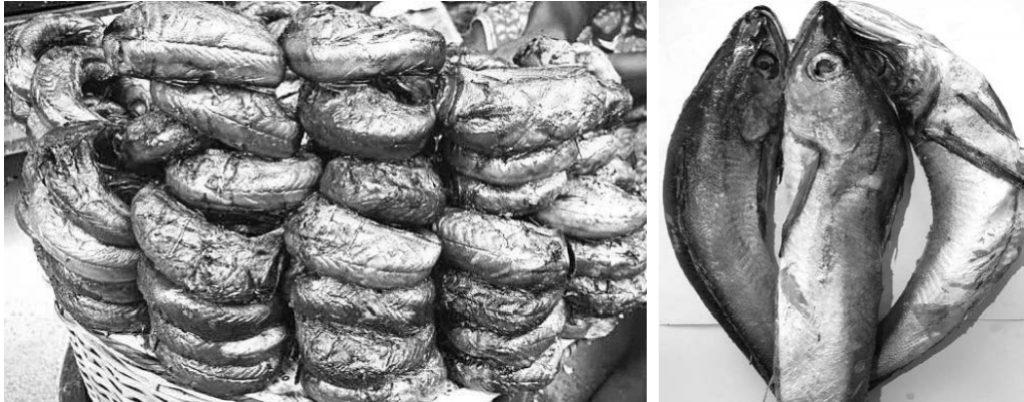
By Elisabeth Adegbesan vanguard
Before now, the faces seen at the places Panla fish is sold have a striking similarity with lack. It’s a uniform picture of people who want to get protein at all cost, irrespective of meagre resources.
While wealth and opulence populate the meat, chicken and other diary shops, there’s this degenerating mien visible within people selling and buying Panla.
Hake fish, popularly known as Panla in Nigeria, is a soft, white, flaky fish with a texture slightly more delicate in texture than haddock. It has a mild flavor and is lean and moist, when cooked. Typical cooking methods include broiling, baking, frying, and steaming.
However, from close observations, the margin between these classes of diary sellers is fast thinning out.
In fact, it may have disappeared completely.
The faces you see in the shop of the poor women selling Panla shows people who had been in wealth. And, the shinning faces of the sellers is telling an interesting story.
Nigerian economy has been on a free fall for the past three years and the effect is that lifestyles don’t give anybody notice to change.
Prices of goods and services went up, affordability becomes an issue and classes of foods abhored by the rich, returns to their table.
Panla is a fish that has, at least, four benefits for a healthy diet; it is low in fat, low in calories, a source of high-value protein and a significant content of vitamins and minerals.
But its lean shape makes it usually perceived as a fish for the poor and hence not patronised as such which made it cheap.
Then, few people used to sell the fish in market places.
But as the prices of chicken, fishes and eggs rise, not only the average households, but wealthy homes now go for Panla.
Speaking to Economy & Lifestyle, Mrs. Ramota Bashorun, a fish seller at Ikotun market said that over the past seven years of her being in the fish business, she has never witnessed such high patronage of Panla fish.
“I have been in this fish business since 2016, since then, I have never witnessed such huge patronage in Panla fish.
“It was only bought by the poor. Even we the sellers don’t buy many because of its low patronage. Other fishes like Tilapia, Kote (Trachurus trachurus or Horse Mackerel), Titus (Scomber scombrus) and catfish gained high patronage.
“Then it was only the poor that patronize fishes like Panla and Shawa (Clupea harengus or Herring) whose prices were N20 to N50 depending on the size.
“Today, the Panla that was neglected by the poor is embraced by all and sundry. Even the poor can no longer afford it. Though it is the cheapest but also expensive to the poor.
“Four pieces of big Panla is sold for N1200 to N1,500. While two tiny pieces is sold for N200.
“In a week, I sell over three cartons of roasted Panla fish. I buy less of other fishes because many don’t buy them.”
Mrs. Alani Kuburat, a customer patronising Bashorun said that she had to resort to buying Panla fish since last year.
“I have been buying Panla fish since last year. I don’t like the fish but since there is nothing I can do about it, I have to.
“Look at the cost of Kote and Titus. Before you can get four big sizes of these fishes with as low as N2,000. But now N2,000 can get you only one big size fish, which is not enough for my family.
“Sometimes I mix it with Kpomo (cow hide), so that it can serve the family for a week.”
Mrs. Marvelous Anyanwu, a customer, complained about the rise in dairy products like beef, frozen and life chicken and turkeys.
“Before a kilo of full chicken goes for N1,000, now it is N2,500 to N4,000, depending on the size.
“And it won’t be up to ten pieces when cut.
“Substituting for cheaper alternatives like Panla, Kpomo, egg which are also now expensive is my only option to save cost.”
